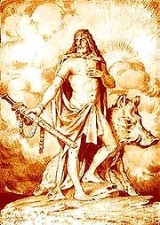
. The elves were originally thought of as a race of divine beings (wight
s, vættir
) endowed with magical powers
, which they use both for the benefit and the injury of mankind. In medieval Norse mythology
, they appear to have been divided into light elves and dark elves, difficult to delineate from the Æsir
(gods) on one hand and the dvergar (dwarves) on the other.
In early modern and modern folklore, they become associated with the fairies of Romance folklore and assume a diminutive size, often living mainly in forests but also underground in hills or rocks, or in wells and springs.
[Answering the phone] Buddy the Elf; what's your favorite color?![]()
[Whispering to fake Santa] You Stink. You smell like beef and cheese! You don't smell like Santa.![]()
[To fake Santa] You sit on a throne of LIES.![]()
[Burps loudly for what seems like thirty seconds] Did you hear that?![]()
First we'll make snow angels for two hours, then we'll go ice skating, then we'll eat an entire roll of Toll House cookie dough as fast as we can, and then to finish, we'll snuggle!![]()
[Dejectedly] Let's just face it. I'm the worst toymaker in the world! I'm a cotton-headed ninny-muggins. [Elves gasp]![]()
[In a public restroom, looking over the wall into the neighboring stall] Hey, have you seen these toilets? They're GINORMOUS!![]()
Us elves like to stick to the four main food groups: candy, candy canes, candy corn and syrup.![]()
[To wild racoon] Does some one need a hug? [The raccoon attacks him] I just wanted a hug!![]()
[After getting hit in the face with a snowball] Ow! Son of a Nutcracker!![]()

